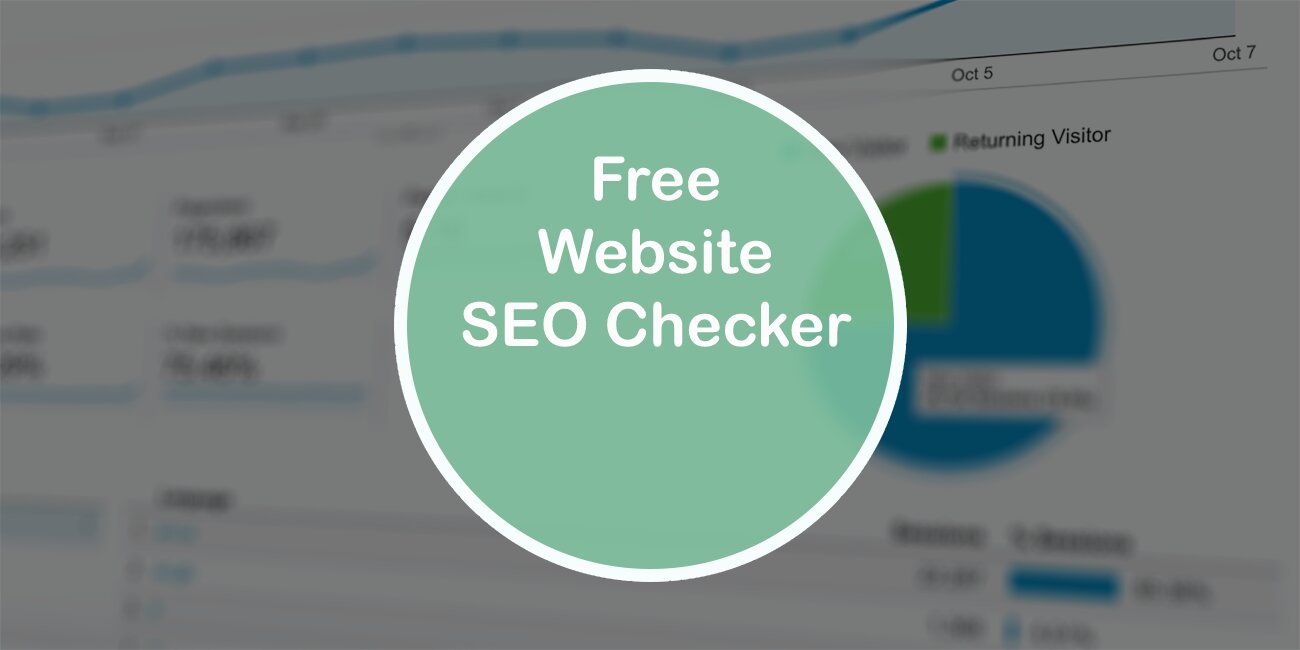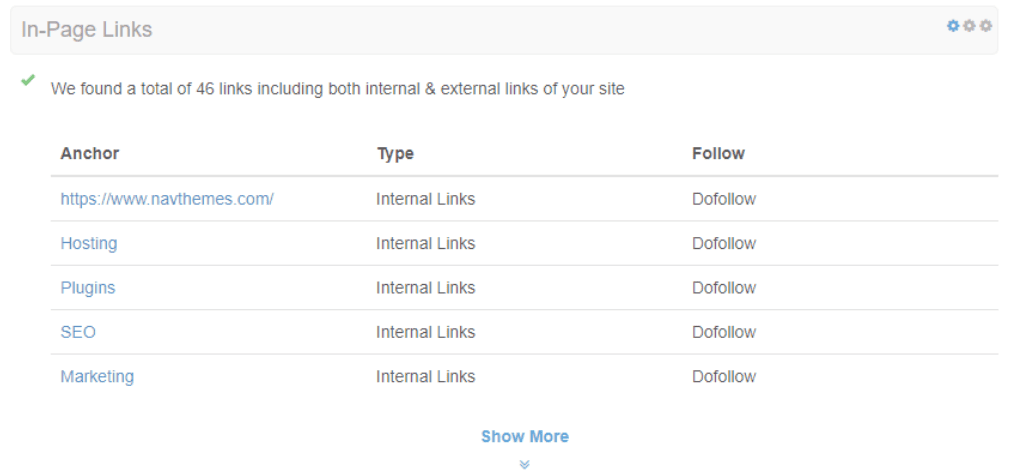Using Websiteseostats, an online SEO checker, you can run an analysis of your site for free. Reports of your analyses can be made and downloaded so you can later compare your site performance and improvements that you made. They will be saved as PDF files that you will be able to open in a web file or print if you prefer.
It defines every #SEO metric and it will point you in the right direction on what to fix on #your site regarding improvement of your SEO. Share on XYou just need to type in your site name in the available field and run the checker. Let us demonstrate how IT works, as well as explain how running an analysis such as this one can help your SEO in the long run.
We’ll go through the tool step by step, showing you every metric as it comes up in order.
1. Title Tag, Meta Description, and Headings
Okay, so let’s start with the basics. The optimal length of a title tag is from 10 to 70 characters, and this includes spaces between characters. Every page on your site must have a unique title, and you have to include the most important keywords in it. So, if your result shows up as more or less, consider tweaking.
To be considered optimal, a meta description has to contain from 100 to 300 characters (spaces included). This description will determine how your website pages are displayed in search results. Make sure that your page’s meta descriptions include your important keywords (they will appear in bold letters when searching).
If you have a good meta description, it will act as an advertisement of your site, so make sure it’s concise, to the point, and aimed at optimizing click rate.

This tool can also analyze your heading keywords. The headings are super important as they not only space the text but also contain the most important keywords.
Headings keywords are very important, and the first level (H1) should include the most important ones. Be sure not to duplicate title tag content in the header tag. Never include more than one H1 per page, and as a compromise, use multiple H2-H6 tags.
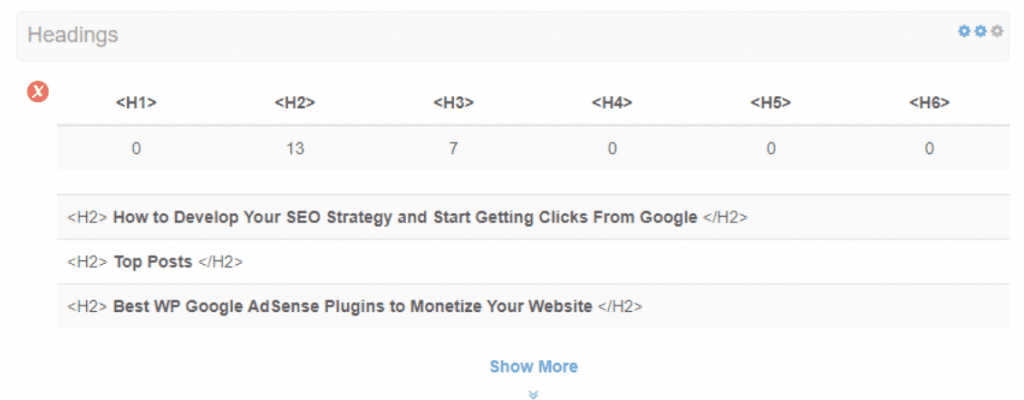
2. Keywords

Okay, so our next stop is keywords. The above image is something called a Keyword Cloud, and it shows the frequency per page of keyword usage. With this insight, you will be able to get a better understanding of the keywords that your visitors are using.
Aside from just this basic metric, this free SEO tool also has a feature called Keyword Consistency. This shows how important it is to be consistent with the use of your keywords. In this table, you can see frequency, title, description, and heading tag used per keyword.
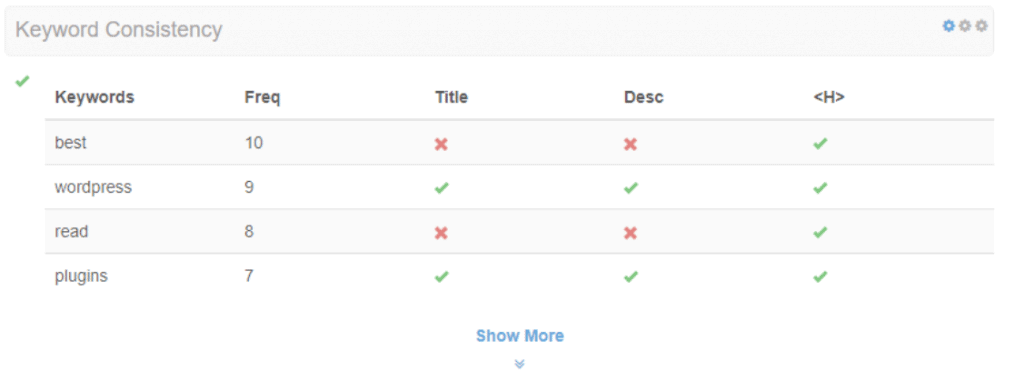
3. XML Sitemap
Our next stop is sitemaps. A sitemap lists URLs and includes info about the latest updates of your site, its frequency, and its importance. With this sitemap, search engines can find your site more easily. It’s usually recommended to generate an XML sitemap and submit it to Google and Bing and to specify sitemap location in your robots.txt file.
This tool simply shows you if you have an XML sitemap file. So, if you don’t, make sure to get on it.

4. Domain Info, Registration, and WHOIS Data
Domain Info is gTLD in the Domain Name System (DNS) that is stored on the Internet. Under the category pertaining to Domain Registration, you will see how old your domain is, the date of creation, and its expiration date. Domain age is important in regards to a higher rank, and the problem with new domains is that they need time to pass to be indexed.

As far as WHOIS Data is concerned, this tool shows information about your domain in the Whois database; it contains admin contact info, billing contact info, and technical contact info of your domain name listing or IP.
5. Google Index
A Google index is a list of all web pages known to Google. When your site is visited via Google, it will detect new or updated pages, and the Google index will be updated with this info too.
If the number is low (for this site, it’s 39, so it is low), it means that bots are unable to discover your webpages and that your site architecture and internal linking are bad. Also, it can indicate that you unknowingly prevent bots and search engines from indexing your page.

6. Backlinks – Backlinks Counter
The next category this tool analyses is backlinks. These are links that “point” to your website from other sites. This factor is very important in SEO; it is a sort of recommendation for your site. The quantity and quality of backlinks must constantly be improved, and you will need a strategy to accomplish that.
7. PageSpeed Insight
This is one of the most important SEO metrics in general. Page speed is very important for search engines and to improve your visitors’ user experience. You can analyze the site in question for both desktop speed and mobile website speed.
Here’s what that looks like:
Desktop
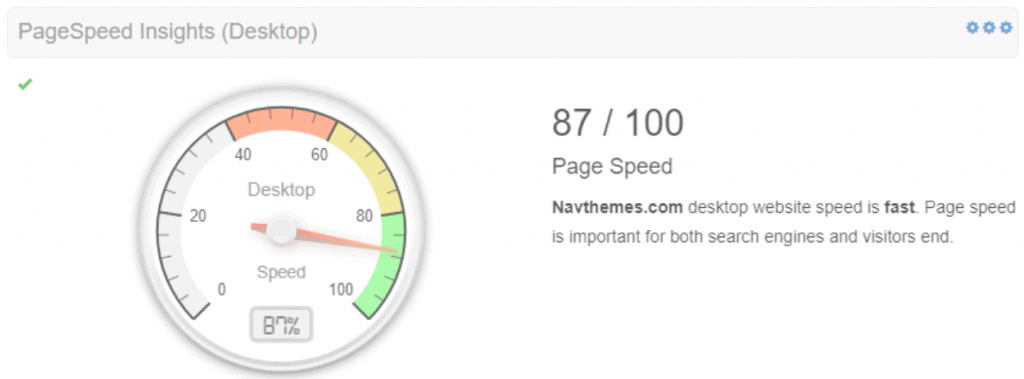
Mobile
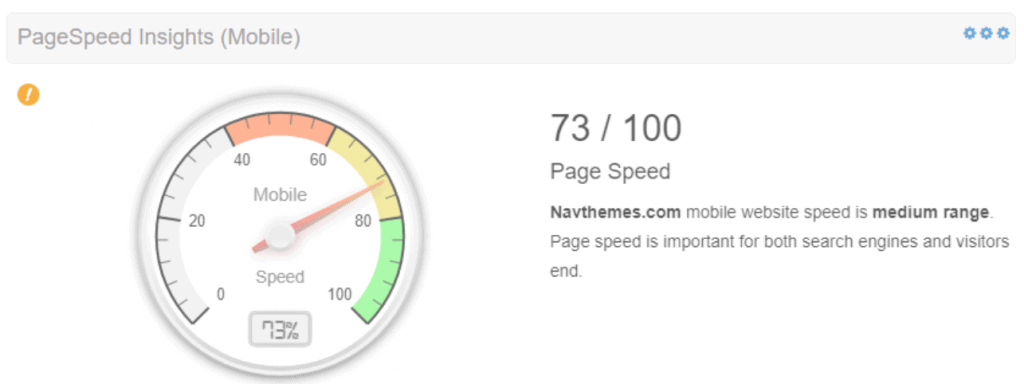
If you score anywhere between 40 and 60, it’s pretty bad. A score falling somewhere between 60 and 80 is mid-range, and everything over 80 shouldn’t need much fixing. Page speed insights are reports about the performance of your site on desktop and mobile devices. These reports provide field data about your site and also lab data.
8. Social
This is info about data that users create and what they share, knowingly and voluntarily. It represents the social media status of your website. If you’re newer, you shouldn’t worry too much about this, but a solid social media presence does help with brand recognition and is a contributing factor in long-term success.
9. Mobile Friendliness, Compatibility, and View
You can also check for Mobile Friendliness. Essentially, this metric represents the usability of your mobile website. Google uses this as a ranking sign in mobile search results.

On the other hand, Mobile Compatibility shows the accessibility of your site on all devices. To make this grade higher, try to avoid embedded objects if it’s not a special case. (grade for this site is “Perfect”).

Mobile web usage is enormous. More than 75% of all visitors and internet consumers browse via mobile phone, so your site should be easy to navigate and look clean on all mobile devices, especially the most popular ones.
10. Link Analysis
One of the last things this tool will do for you is help with link analysis. The best practice for in-page links is to keep them under 200. By adding unnecessary links, you will undermine the value added to your important links. Using the Nofollow option for links will not prevent taking these links into the calculation of value passed through every link, so keep that in mind.
And our last stop is broken links. It is very important to be sure that there are no broken links on your site. Broken links are sending users to web pages that don’t exist. If you have broken links, that will be considered very bad for your site’s reputation, usability, and SEO. So if Websiteseostats has found any make sure to deal with them accordingly.
Conclusion
It is not enough to create a website and focus on aesthetics. SEO is a way to make sure your site is visible in search engines, positioned on top of search results, and draws the attention of the users, so your content will reach the targeted audience.

